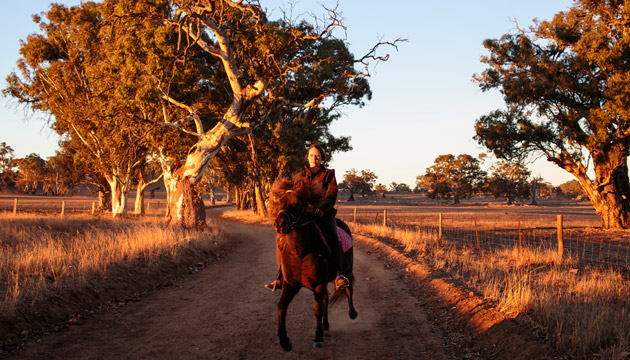Pint-sized Icelandic horses are a favourite breed for two Australian women.
Story Anne Crawford Photo Roff Smith
Laura Hall-Smith has tried her hand at riding bulls and sung the national anthem at rodeos as stockhorses loped by, their riders holding the Australian flag. But at home in the Barossa Valley, SA, she can be found riding a somewhat different mount.
Laura owns several Icelandic horses – a pony-sized, thick-haired breed more used to the fjords and glaciers of northern Europe than dusty Australian paddocks.
Icelandic horses were used by Vikings for long-distance transport. The stocky equines have rock-star manes and loads of presence and stand at around 13.2 to 14 hands high. Loved by their owners for their sociable temperaments, they are best known for having an extra gait – and sometimes two extra gaits: the tölt, which has the same four-beat action as the walk, but can reach speeds of up to 20 kilometres per hour; and the flying pace (which not all Icelandic horses can do) is a two-beat lateral gait so-named because its suspension makes the horse look like it’s flying.
The first Icelandic horses in Australia are believed to have arrived by sea in Melbourne in 1863, but the breed developed more formally in the mid-1990s, when brothers Clyde and Roger Haldane imported nine of them from Denmark. There are still fewer than 250 in Australia, most concentrated in Victoria, the bulk at the Haldane Icelandic stud in Yambuk.
This story excerpt is from Issue #121
Outback Magazine: October/November 2018









